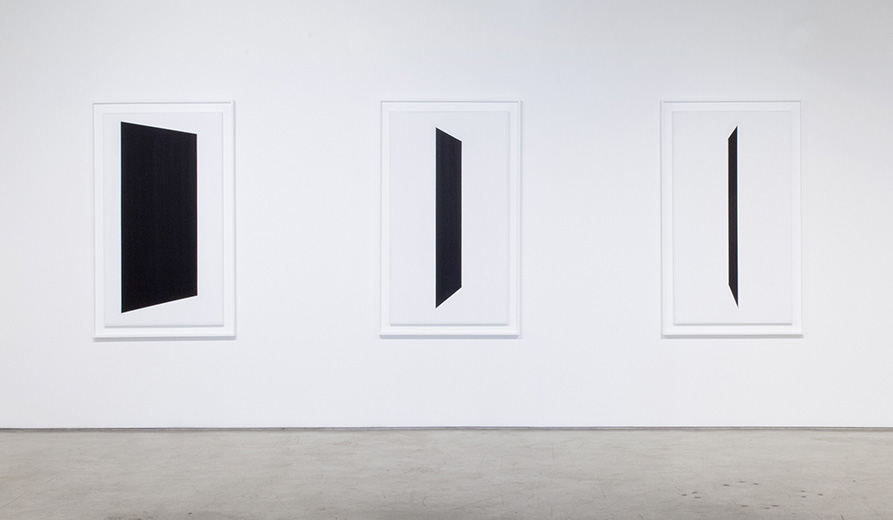
- Source: Cool Hunting
- Author: Kyle Raymond Fitzpatrick
- Date: August 06, 2018
- Format: DIGITAL
Form Shapes Language
Exhibition Review
Shapes have a way of speaking and “Form Shapes Language” (on now through 25 August) at LA’s Morán Morán Gallery is a great place to learn new ways to listen. The impressive group show brings together seven artists from around the world to share their take on contemporary, minimalist abstract forms. Small triangles poke onto big frames like teeth, blobbing bodies of color mimic the folds of the body, slim rhombi suggest disappearing—the works on display are inanimate and far from the real but there are stories hidden within, just waiting to be revealed.
Take Tomashi Jackson’s “Interstate Love Song (Friends of Clayton County Transit) (Pitts Road Station Opposition),” a work created in 2018 that ties together Atlanta’s mass transportation struggles with color and form. The piece is made up of images of protests—from the city’s battle for and against train systems—that pitted the city’s affluent whites against working class black populations. Jackson depicts the two sides in bright red and pink rectangular strips that are tacked onto a triangular awning found in the city. What could be seen as a play between the three-sided and the four-sided instead becomes a complicated discussion of the race, class, environment, and history.

Installation view: Form Shapes Language (2018)
Other works function similarly but in even more abstract ways, like Angela de la Cruz’s slumping, deflated works that meditate on the effects of a stroke and Michael Genovese’s Ellsworth Kelly-reminiscent black shapes that capture the moment before an iPhone camera readies itself for a selfie. There are rich stories in the works that wait to be listened to: a viewer has to take the time to stop and listen.
There are big events here, too, like Hayal Pozanti’s huge piece, “5 and 2 (Hundred millions of plastic straws used every day in the United States and the number of times they would circle the Earth).” Ann Edholm’s triangle studies are attention-grabbers too, given their contrasting brightness and darkness. Meanwhile, Torkwase Dyson offers the most dynamic and “busy” works about water as Anthony Pearson meditates on what a canvas can do (or be).
Like many artistic expression today, the pieces included in “Form Shapes Language” offer several moments for people to think and listen and look at what is “normal” in a non-traditional way. The minimalist and the shapely may always hold an element of being blocky but they always stand for so much more. That’s something to keep considering in this ideological economy.

